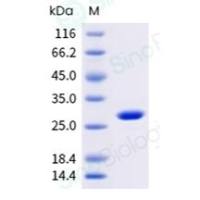Salt (KCl) concentration
互联网
For the successful PCR or multiplex PCR amplification of many loci (especially products between 100-1000 bp) raising the buffer concentration to 1.4x-2x (or only the KCl concentration to about 70-100mM) dramatically improves the efficiency of the reaction. In fact the effect of the KCl concentration was more important than any of the adjuvants tested (DMSO, glycerol or BSA). Generally, many primer pairs producing longer amplification products worked better at lower salt concentrations, whereas many primer pairs producing short amplification products worked better at higher salt concentrations. This is illustrated in the three figures below in which there is a realtive shift in the intensity of the products from the longer one towards the shorter ones as the ionic strength increases. An increase in salt concentration makes longer DNA denature slower than shorter DNA, so shorter molecules will be amplified preferrentially. Some primers, however, worked well over a wide range of buffer/salt concentrations. Examples of multiplex reactions at different buffer concentrations are shown in Fig. 16, 17 and 18.
Fig. 16. Multipex PCR amplification of mixture A at increasing buffer (salt) concentrations.
In Fig. 16, both primers for locus 6 have a melting point around 58° C whereas primers for locus 5 have a melting point around 52° C. At the same ionic strength (1x buffer) and annealing temperature (54° C), amplification of locus 6 will be favored over 5. To increase binding of primers for locus 5 while keeping the annealing temperature the same, stringency of the PCR buffer needs to be decreased. This can be easily done by increasing the KCl (or buffer) concentration. A different example is locus 7, where both primers have a similar melting point with primers for locus 6 (58° C). They are not as well amplified in 1x buffer, but respond well to increase in the salt concentration. In this case, the explanation may be that the entire product 7 has a lower GC content than product 6. This makes the DNA helix of product 7 less stable when exposed to the extension temperature. Some of the new strands may detach from the template, before the polymerase fully amplifies them. Decreasing the stringency of the buffer (1.6x-2x) might "stick" the newly synthesized strands better to the template, allowing the polymerase to finish its task.
PCR reactions in which only KCl or Tris-HCl concentrations were varied, showed that the described effect is due to the salt (KCl). Tris-HCl concentration did not influence the outcome of the reactions over a large range of concentrations (from 0.75x to 5x) whereas MgCl2 concetrations have a somewhat different effect (detailed on page 14).
|
|
Fig. 17. Multipex PCR amplification of mixtures B and undefined at increasing buffer (salt) concentrations. |
|
|
Fig. 18. Multipex PCR amplification of mixtures D and E at increasing buffer (salt) concentrations. |
上一篇:Designing PCR programs 下一篇:PCR buffers









